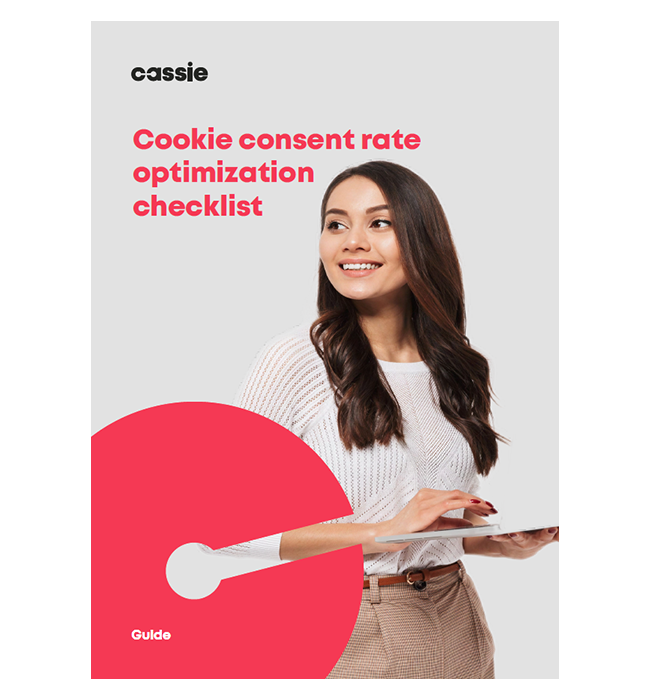Google's move: Why the Cookieless Future matters now
Posted: February 14, 2024
You’d be forgiven for not feeling particularly worried about the cookieless future.
At this point, we’ve been prophesizing about the impending doom for around five years, with little to no direct impact… Yet.
We know it might sound like the same old story, but 2024 looks like the year that the cookieless future finally becomes the present.
Why now?
In January 2024, Google has taken steps to depreciate third-party cookies from 1% of Google Chrome users via automatic Tracking Protection technology.
So, it is happening, slowly but surely. By launching this test phase, Google is signaling that it’s prepared to move ahead with a full roll-out.
This shift aligns with the growing demand for enhanced user privacy, alongside their recent implementation of Google Consent Mode.
Adapting early ensures compliance, builds trust with consumers, and safeguards brand reputation.
In case you need a quick recap, here’s why you need to be aware of the loss of third-party cookies on Chrome browsers:
- Google Chrome browsers hold around 65% market share of everyone using the internet.
- This means that once Google automatically removes third-party cookies from all Chrome browser users, website owners will no longer be able to accurately track and attribute incoming traffic sources for anyone visiting using Chrome.
- This is on top of the privacy measures already in place on Safari and Firefox, equating to around 25% of browser share users.
- The majority of traffic will now come from browsers with privacy features embedded.
- Without tracking capabilities across different websites, marketers face challenges in accurately allocating budget and understanding customer journey paths.
- This shift requires a reevaluation of advertising strategies, focusing more on first-party data and alternative technologies for personalized targeting.
Market leaders HubSpot highlighted in the latest State of Marketing Report 2024 that in the cookieless future, first-party data is the only way to personalize content.
But when we looked at the stats around how marketers feel about the upcoming changes, we were surprised to find that many marketers are not ready for the shift.
We’ve picked out some of the most interesting statistics from HubSpot’s annual report, with ideas on how brands can get ahead of the cookieless future so that they don’t lose ROI, insights and attribution…
41% companies are not working on a plan to approach cookie-free targeting
Worryingly, over a third of companies are not considering the impacts, suggesting a notable gap in readiness for the cookieless future.
We get it – why plan for something that’s been whispered about for years with no tangible outcomes. However, the latest actions from Google suggest the state of cookies will move ahead this year.
Businesses that are not proactively planning for cookie-free targeting may face challenges in maintaining effective digital advertising strategies. This could result in a decreased ability to reach and engage target audiences.
Being prepared for the changes allows businesses to stay ahead of industry trends, navigate privacy concerns, and deliver more personalized and relevant content to users.
3 ways to plan an approach to cookie-free targeting:
Embrace first-party data: Invest in collecting and leveraging first-party data directly from your audience. Encourage users to willingly share information by offering personalized experiences, exclusive content, or other incentives. This data can be used for targeted advertising without relying on third-party cookies.
Contextual targeting: Shift towards contextual targeting, where ads are placed based on the context of the content users are engaging with, rather than relying on their individual behavior. This approach respects user privacy while still delivering relevant advertisements based on the content of the page.
Explore privacy-compliant technologies: Stay informed about emerging technologies and solutions that prioritize user privacy. There are alternatives for personalized targeting without compromising individual user data. Utilize a Consent Management Platform to collect, honor and distribute consent data across your tech stack, so that you can communicate compliantly and ensure compliance by default.
Only 65% of marketers report having high-quality data on their target audience
High-quality data is crucial for effective marketing strategies. Inaccurate or incomplete data can lead to misguided decisions, ineffective targeting, and ultimately impact the overall success of marketing campaigns. Marketers with better data quality are likely to have a more accurate understanding of their audience and can tailor their efforts accordingly.
As data privacy regulations become more stringent, maintaining high-quality data also aligns with compliance requirements. Ensuring that data is accurate, up-to-date, and obtained with proper consent is essential for building trust with customers and adhering to privacy standards.
Businesses should implement processes to monitor and clean existing data, and methods to collect more accurate data. This comes back to first-party data; by letting customers tell you how to market to them, you’re connecting both consent and reliable insights without the need for third-party cookies.
Consider:
- What first-party data you want to collect
- How you’re going to collect it
- How you’ll use it
- How you’re going to make sure you’ve got consent to use it
73% of marketers say personalization is important but only 35% of marketers feel that customers currently get a very personalized experience with their brand
We all know personalization is key to driving better customer experiences, but the reality is we’re not seeing it come to life.
There’s a notable gap between aspiration and execution in the realm of personalization.
This could be attributed to factors like data quality, technology limitations, or a lack of robust personalization strategies.
As customers become accustomed to personalized experiences in various aspects of their online interactions, there is an increasing expectation for brands to deliver highly personalized content and services.
Bridging the gap between what marketers recognize as important and what is currently being delivered can contribute to meeting customer expectations.
Achieving a very personalized experience for customers requires a balance between scalability, customization and privacy. The privacy vs. personalization paradox is very relevant, with juxtaposed expectations of what consumers want vs. how it’s delivered. We want personalized experiences, but not at the expense of our private data being exposed.
By asking customers what personalization they want, you’re much more likely to create relevant and contextual experiences without encroaching on their privacy.
Collect granular user preferences through form fields, widgets, subscription pages and preference centers to build a compliant and accurate database ripe for building effective personalized marketing campaigns more likely to convert.

Cookie Consent Checklist: 20+ Points to Consider
Do you actively monitor the performance of your cookie banners or regularly make changes to enhance engagement? Cookie banner optimization is essential to increase user engagement and build trust. This free guide covers 20+ cookie banner optimization points to consider that meet regulatory guidelines and improve higher opt-in rates, so that your business can achieve compliance without compromise.

